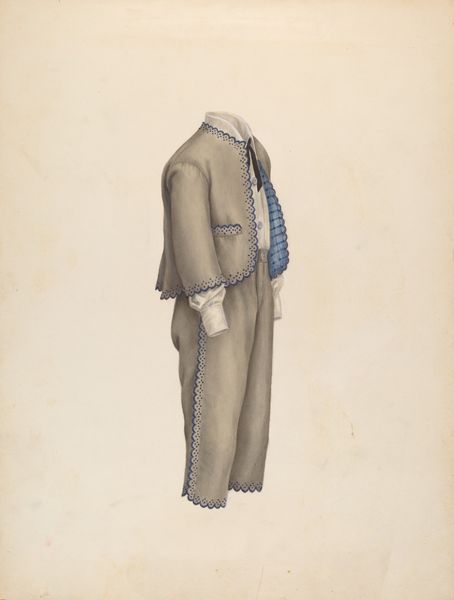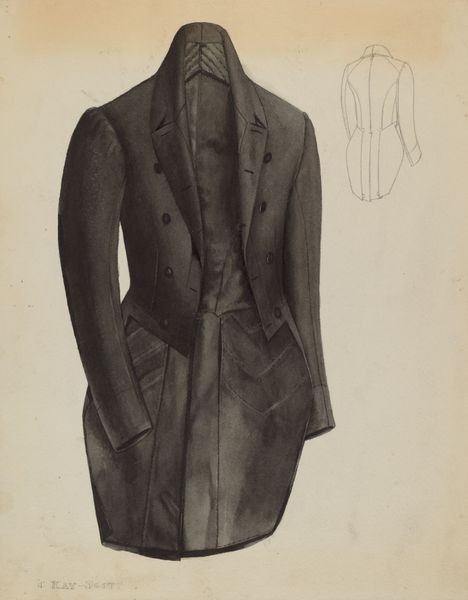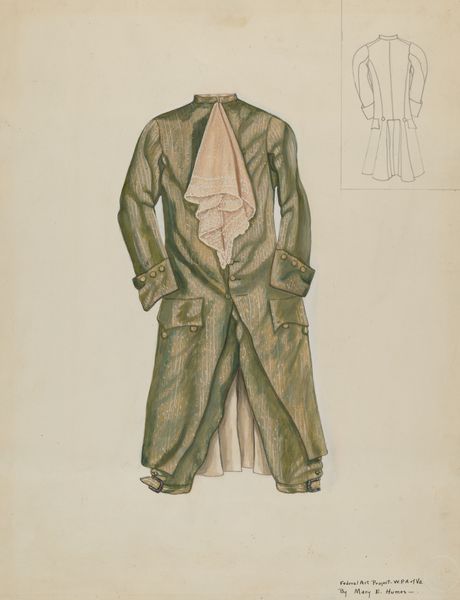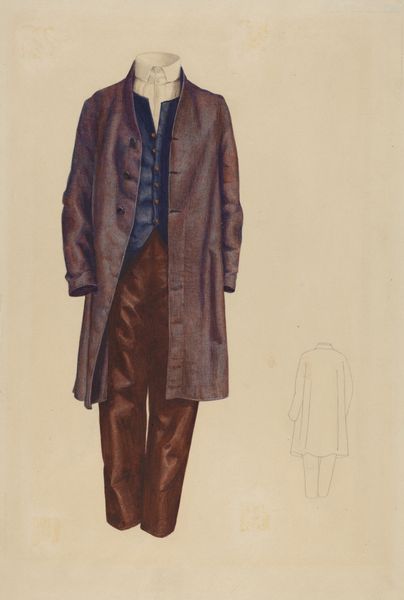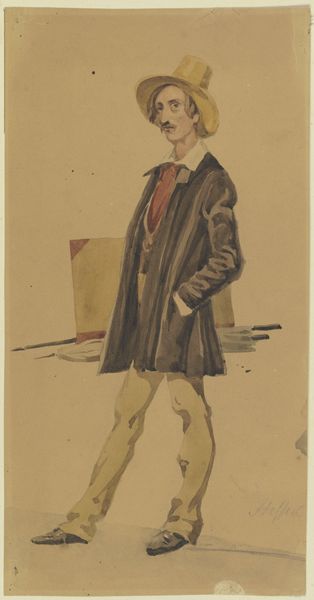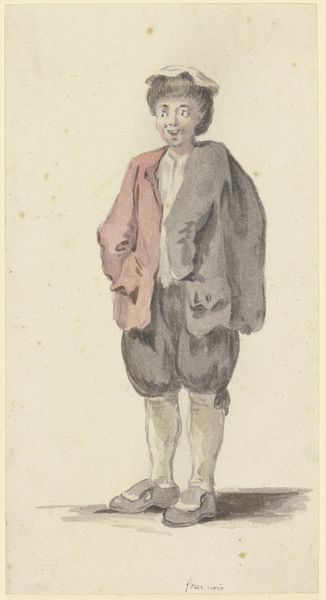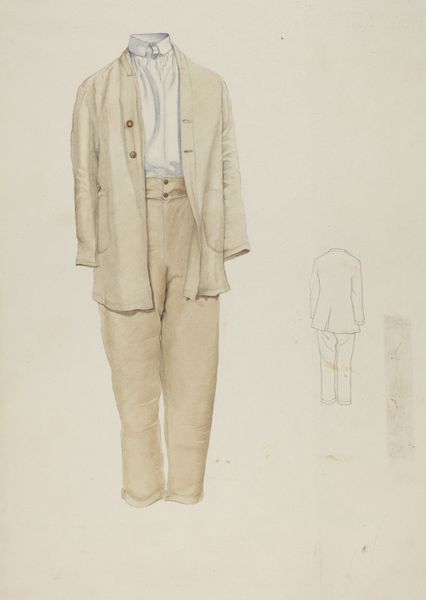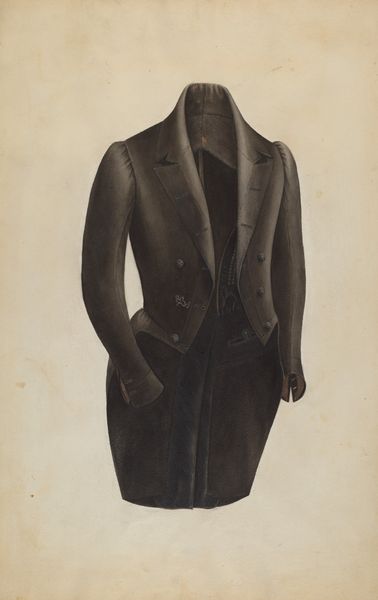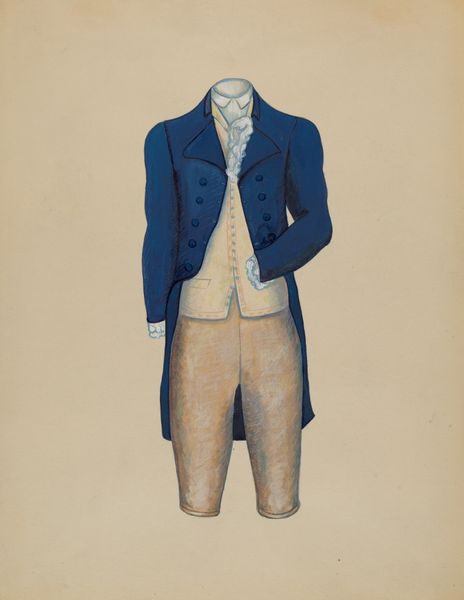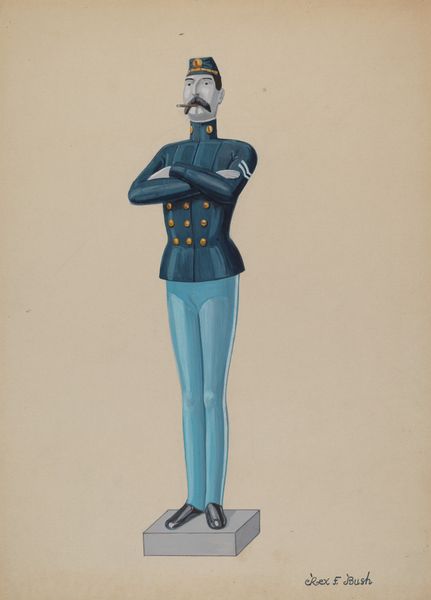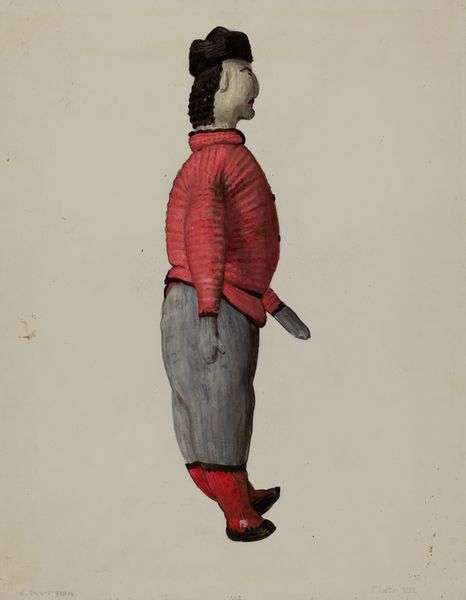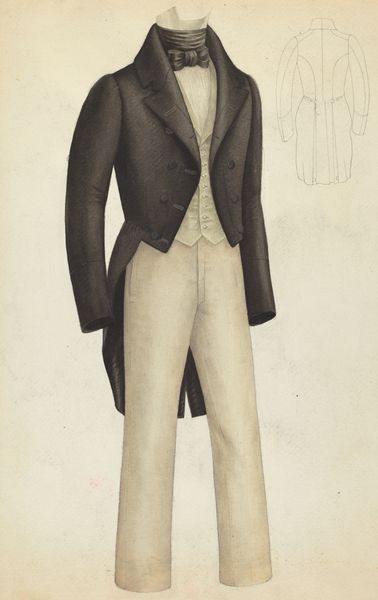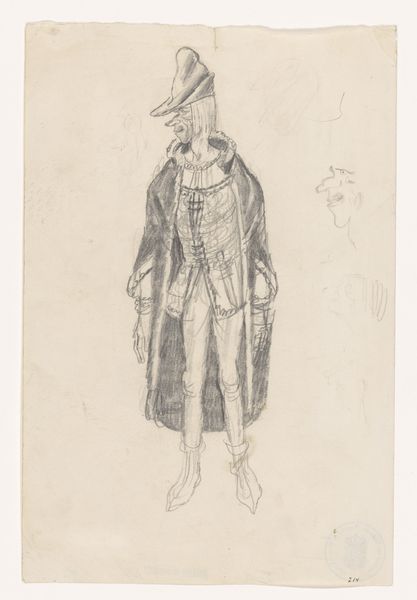
drawing, watercolor
#
portrait
#
drawing
#
charcoal drawing
#
figuration
#
watercolor
#
watercolour illustration
#
graphite
Dimensions: overall: 35.4 x 27.9 cm (13 15/16 x 11 in.)
Copyright: National Gallery of Art: CC0 1.0
Curator: Here we have "Rag Doll," a watercolor and graphite drawing dating back to approximately 1936 by Jane Iverson. What's your initial read on this intriguing portrait? Editor: Stark and poignant, I would say. The figure’s incompleteness hits you first. A deconstructed portrait hints at identity, loss, or even childhood itself, laid bare and slightly haunting. Curator: Indeed. It’s hard to ignore the ghostliness about it, wouldn’t you agree? The piece was created during the depression, I believe, which impacted not only the socio-economical discourse but also artistic practice. There's an implicit vulnerability; one might wonder, if the "Rag Doll" speaks about abandonment. Editor: Precisely! Consider the broader context: during the Great Depression, a symbolic rendering of vulnerability rings differently, right? Mass dispossession, unemployment— the very fabric of society seemed undone. Iverson might subtly address those sentiments of displacement. It raises important questions of whose identity is historically rendered visible and whose is marginalized. Curator: I agree with you! Looking at Iverson's creative choices in materiality; there’s also a certain simplicity in choosing watercolor and graphite that gives this portrait an everyday touch that more elite materials maybe wouldn’t. The effect, in my opinion, invites closer reflection on common and yet so significant psychological effects on ordinary people back then. Editor: And the absence of a discernible face amplifies this, it becomes a universally relatable experience of feeling faceless in the machine. Also I notice a high contrast between the meticulously drawn costume and the faceless head that's barely indicated; an ironic take on fashion's role as a social signifier perhaps? Curator: Possibly. The fashion that you are alluding to suggests order, and social belonging, the missing face hints the loss of these privileges. Thank you for that insightful intersectional analysis, I see now more dimensions in this art. Editor: The pleasure is all mine. There's an immediacy in those pieces that speaks across history and it is fascinating to reconsider Iverson's time from this portrait of "Rag Doll".
Comments
No comments
Be the first to comment and join the conversation on the ultimate creative platform.
